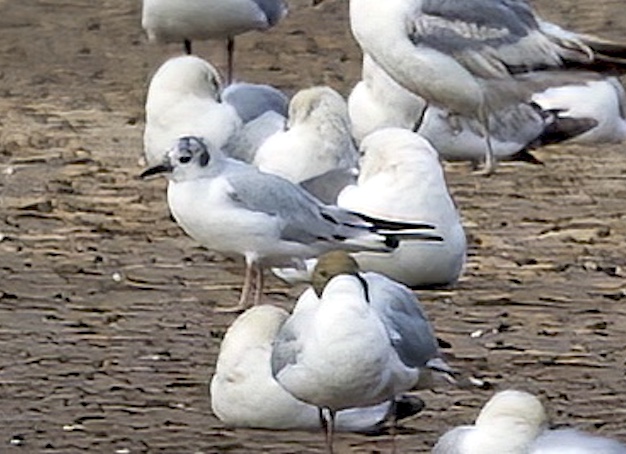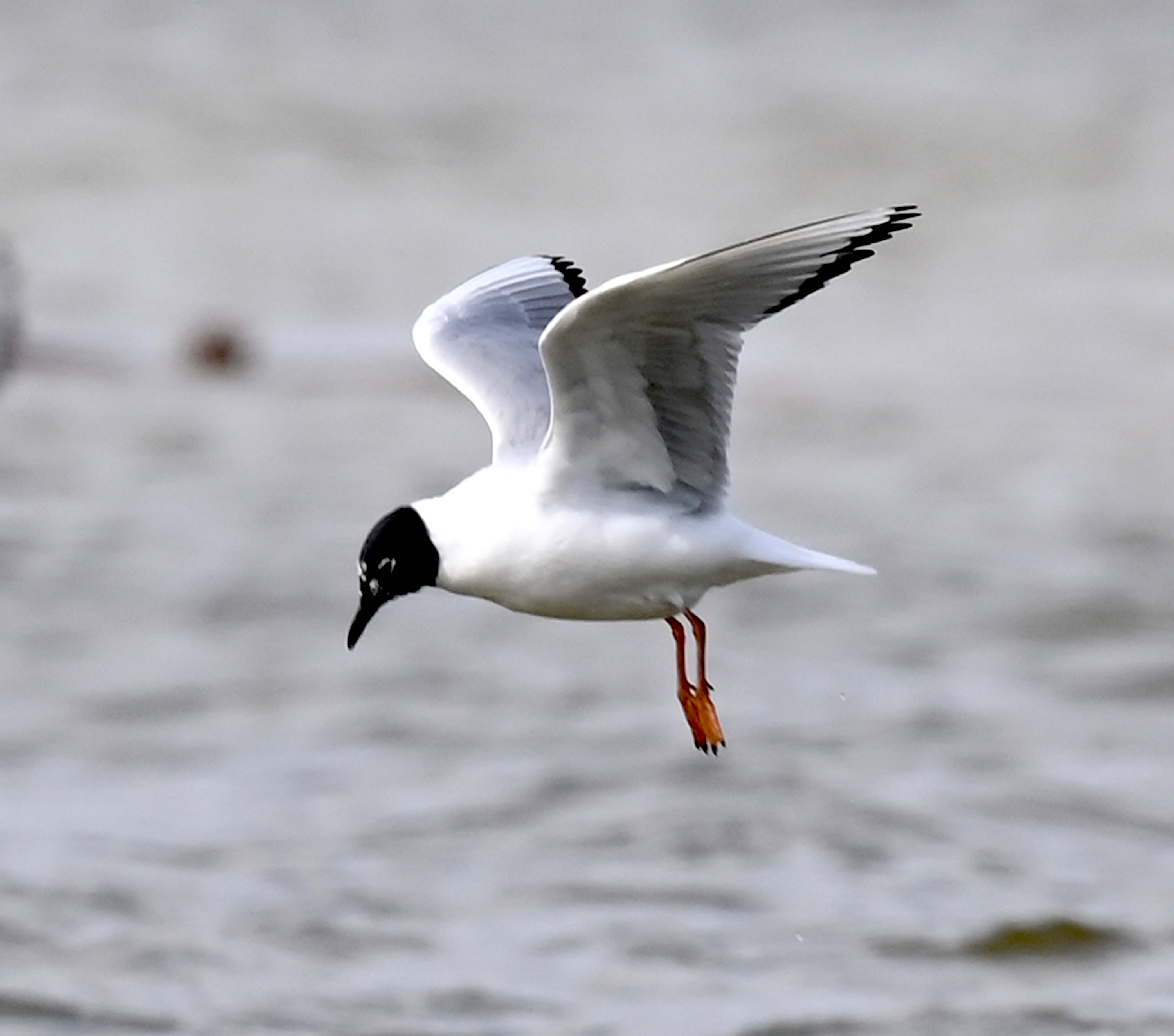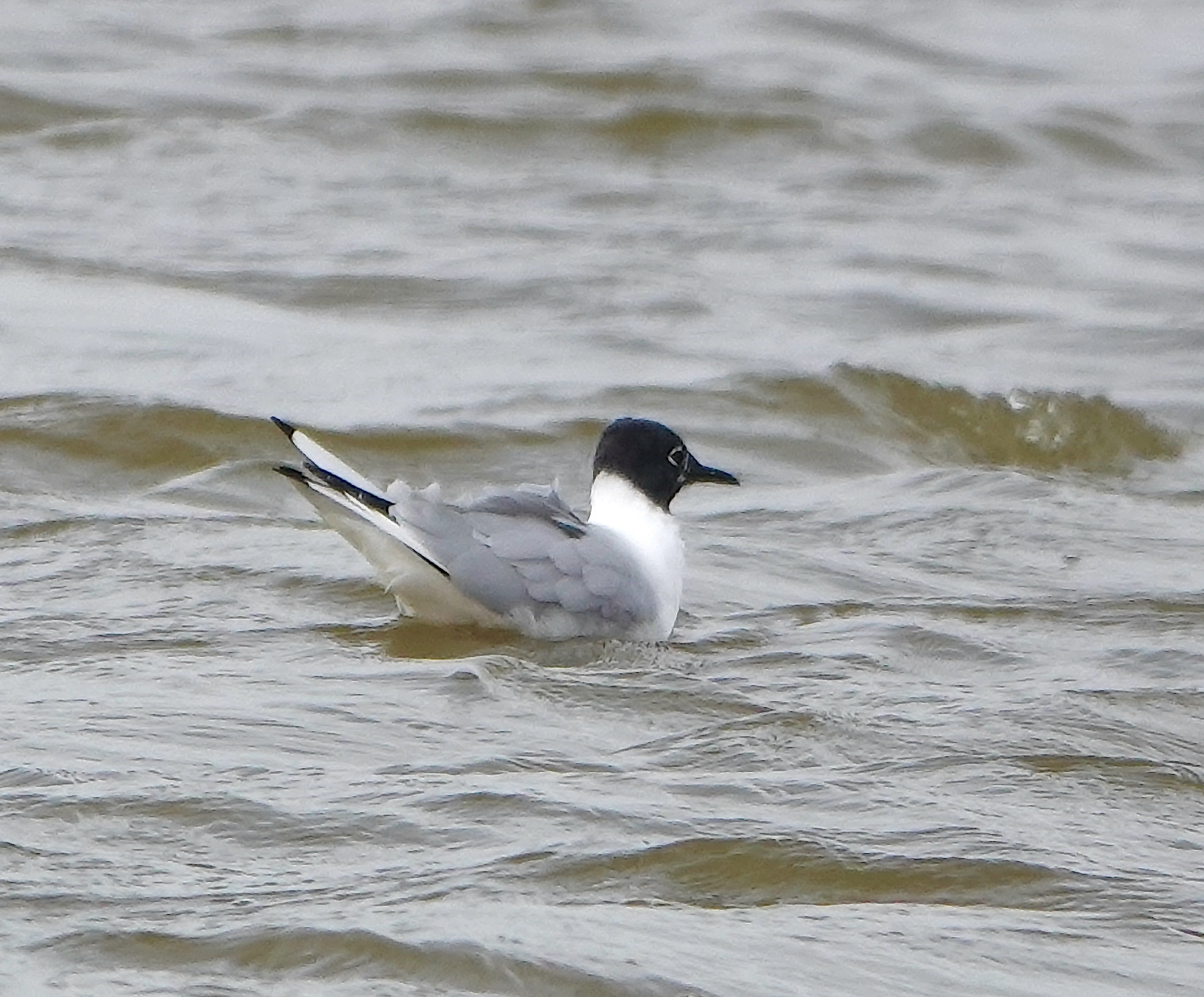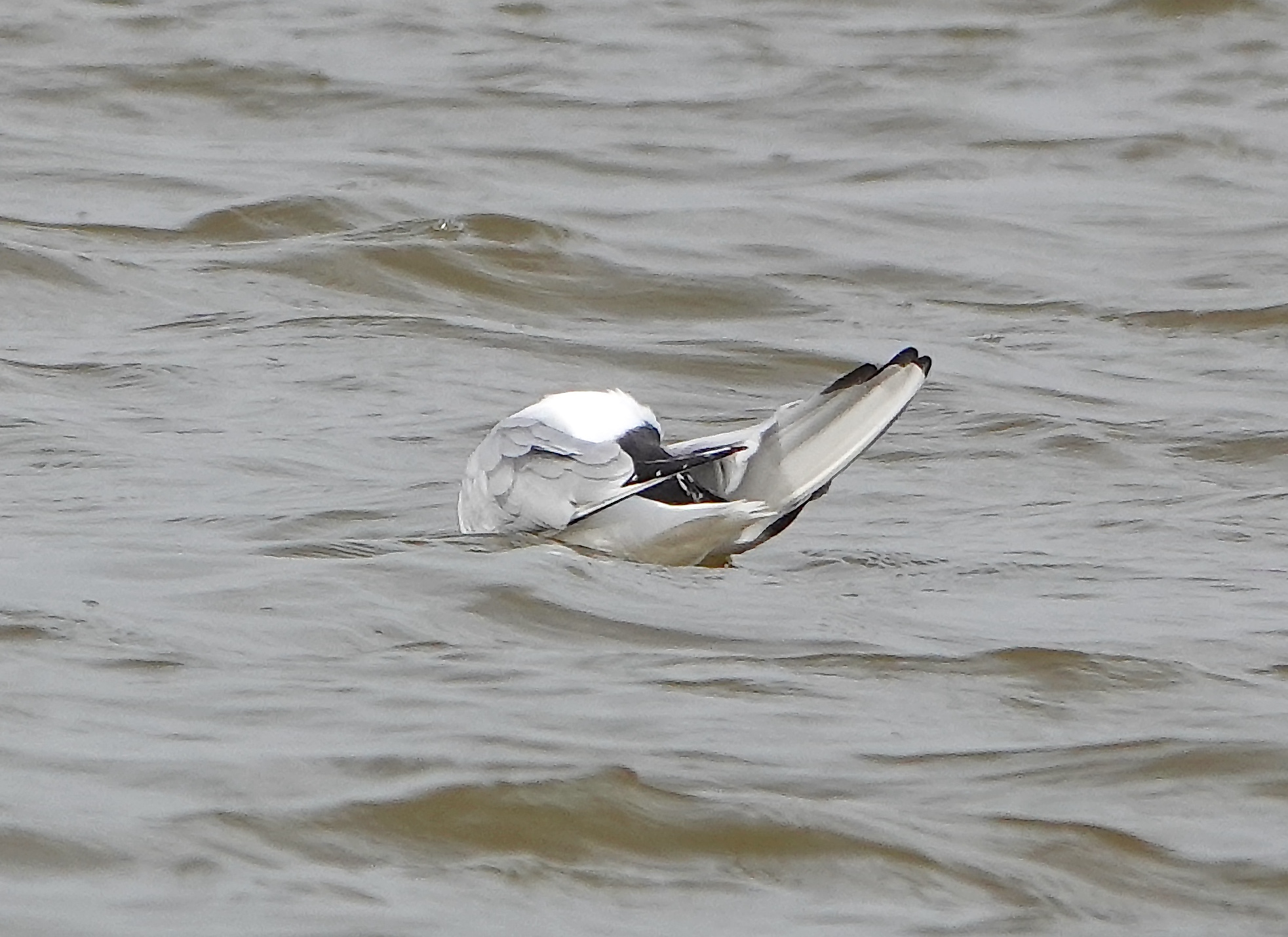Bonaparte's Gull Chroicocephalus philadelphia




The first county record of Bonaparte’s Gull was of a second calendar year bird seen briefly at Grimsby docks on 17th March 1979. The second didn’t occur until 28th June 2010, when it was found among large numbers of loafing gulls present on the Chowder Ness managed realignment at Far Ings before flying off to roost. Remarkably a second calendar year Ring-billed Gull was found within 3 metres of the Bonaparte's Gull during the same evening. The third Bonaparte's Gull for the county was found at Gibraltar Point in November 2020.
Bonaparte's Gull breeds in the North American taiga across Alaska and Canada east to James Bay. They winter on the Great Lakes and coastal USA, south to northern Mexico and the West Indies. The peak period for occurrence is late winter into spring; spring birds have probably wintered further south and then moved north up the Western European coast. As with other Nearctic Gulls this species has a wide scatter of records in Britain and up to the end of 2020 there had been 275 records, averaging about nine per year and increasing.
| Site | First date | Last date | Count | Notes |
| Grimsby docks | 17/03/1979 | - | 1 | 2CY |
| Chowder Ness | 28/06/2010 | - | 1 | 2CY |
| Gibraltar Point | 03/11/2021 | - | 1 | Adult |
| Frampton Marsh | 11/04/2024 | 16/04/2024 | 1 | 3CY+/adult |
Bonaparte's Gull Chroicocephalus philadelphia at Chowder Ness/ Barton-on-Humber June 28th, 2010: second county record.
by Graham Catley
During mid to late June 2010 organic waste was being spread on fields inland from Barton-on-Humber where I live and l000's of gulls were passing over my garden every morning and evening en route to and from their Humber roost. On suitable tides large numbers were loafing on Chowder Ness, a managed realignment site west of Far lngs, before flying off to roost and in the two weeks prior to June 28th I had located up to 10 different Mediterranean Gulls plus several colour ringed Lesser Black-backed Gulls amongst the 2000 birds present. Keen to look for a Caspian Gull or something better I was spending most days at Chowder checking the resting gull flocks in late June.
On June 28th I arrived in the early evening to find several hundred small gulls roosting on the eastern side of the mudflats, so I set up the scope and started to go through them looking for different Mediterranean Gulls (some of which were colour ringed). As I scanned through the gulls, most of which were asleep and facing head-on to my position, I passed a bird that momentarily lifted its head and appeared to show a short all black bill. As quickly as its bill had appeared the bird went back to sleep but as I stalled on the bird in question, I noticed that it also appeared to show an obvious mid-grey shawl around its nape spreading onto the neck sides and a restricted pattern of black markings on the head. At this stage from the angle, I was looking I could not see its legs as it was sat down, and the size did not seem vastly different to the surrounding Black-headed Gulls as it was head-on. I was more than a little intrigued but tried not to jump to any silly conclusions. After 30 minutes it had not moved! It was getting later in the evening, and I was worried that if it was a Bonaparte's, as I suspected, and I left it too late then no-one else would be able to get there before dark, so I tentatively rang Neil Drinkall (ND) and Roy Harvey (RH) and suggested they be ready to move! Ten minutes later it stood up showing the very short and pallid fleshy legs and feet and it’s all black, fine-tipped, bill with the restricted black smudge over the eye and blackish crescent on the head sides confirming my initial suspicion that this was a first-summer Bonaparte's Gull on my local patch! Further phone calls encouraged some speedy driving and ND and RH arrived within 15 minutes followed over the next hour by a few other local observers who all enjoyed views of the bird before it eventually flew off to Redcliffe Middle Sand to roost with the Black-headed and Common Gulls.
Once the bird stood up and started to walk about it was surprising how small it was compared to the Black-headed Gulls being about 70% of their size. In flight it showed the white underside to the primaries with no darkening on the outer feathers but a narrow black trailing edge typical of the species a pattern replicated on the upperside of the primaries. Amazingly as we all sat watching this bird I glanced to one side of it and was staggered to find a 2CY Ring-billed Gull sitting within 3m of the Bonaparte's; both were first records for my local patch and the Bonaparte's only the second record for Lincolnshire.
(Account as per new Birds of Lincolnshire (2021), included September 2022)

